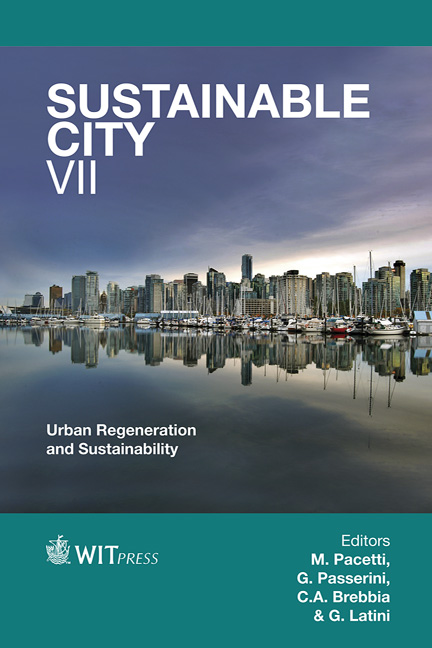Integrated Sustainable Urban Design: Neighbourhood Design Proceeded By Sustainable Urban Morphology Emergence
Price
Free (open access)
Transaction
Volume
155
Pages
12
Page Range
631 - 642
Published
2012
Size
775 kb
Paper DOI
10.2495/SC120532
Copyright
WIT Press
Author(s)
S. Vahabzadeh Manesh, M. Tadi & F. Zanni
Abstract
More than three-fourths of the world’s population live and work in cities, where up to 80% of all available energy is consumed and over half of greenhouse gas emissions are created. In this complex condition, sustainable urban development could deal with both urban growth demands as well as environmental concerns. Regarding awareness of the population distribution as it affects energy consumption, this paper sketches out the relationships between urban morphology and energy consumption, providing some new basic design principles to re-shape urban assessment, as well as to design new sustainable neighborhoods as an integrated part of the city. Our research applies a specific as well as an innovative approach based on a holistic methodology with the consideration of the city as a complex adaptive system with the ability to learn from past encountered conditions. Hence, considering that the energy consumption of the city is not the sum of all its buildings’ consumption, and the final emergence of the system is completely different than the individual element’s performance, is the main premise of the research. Accordingly, the paper illustrates a simulative method, based on mentioned methodology of complexity, for one whom deals with the sustainable neighborhood designs and urban transformations. The research is not suggesting a unique solution for different contexts, but rather investigating how to control the urban transformation process to achieve a sustainable form. Keywords: urban transformation, sustainable form, complex adaptive system, modification, integration.
Keywords
urban transformation, sustainable form, complex adaptive system,modification, integration.





